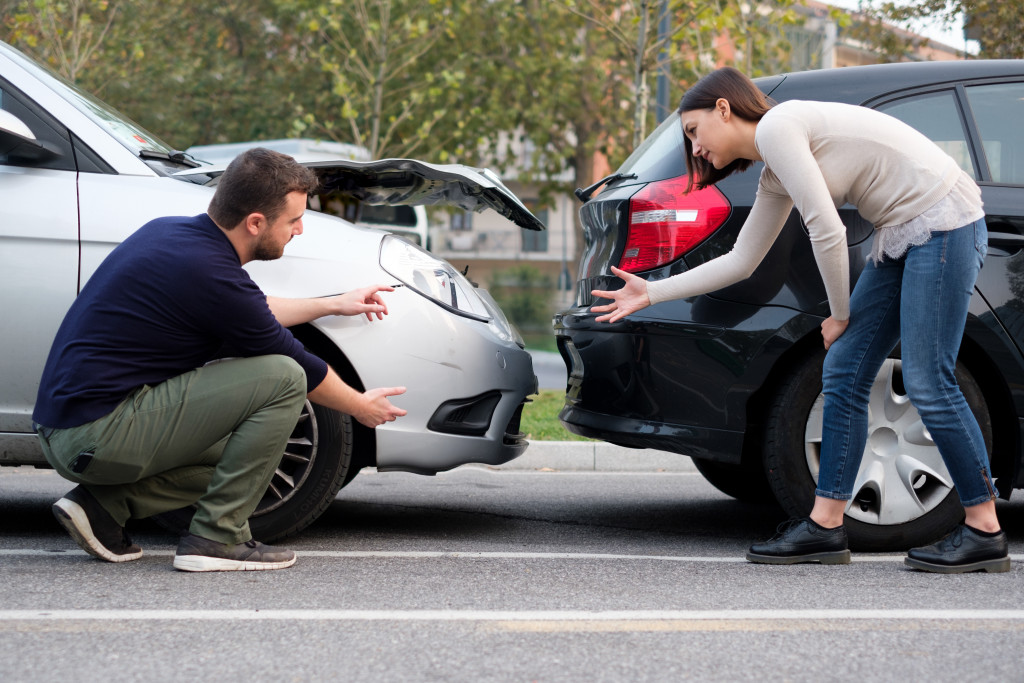A car accident, no matter how grave, is an unfortunate incident for all parties involved. After all, most auto accidents are unintentional. But many of them can be due to someone’s poor judgment or negligence. Negligence occurs when one or both drivers fail to exercise caution, for instance, running a red light or taking the wrong lane. When this negligence causes damage to someone else’s property or, worse, results in serious injuries and fatalities, someone must be held liable.
The process of determining fault and liability legally could vary, depending on the state and the institution (the police, the insurance company, and the court).
At any level, this process can be overwhelming and stressful, especially if you’re not sure about whether you’re at fault. But it pays to have a deeper understanding of how the system works.
How the Police Determine Fault
After checking yourself and your passengers, the next logical step after an accident is to call the police and emergency services. If it’s just a minor scratch and you and the other driver have agreed to settle then and there, you should be fine. But if the damage is serious, it’s best to report it to the authorities.
When police officers come to the scene, the first thing they will do is assess the damage. They will interview the drivers, passengers, and witnesses of the accident if there are any. This way, they can piece together an account of what happened. If there are any CCTV cameras, they will also comb through the footage to confirm the report. Then, they will fill out a police report of the incident and form their professional judgment of who was at fault.
They will then submit this report to their department. However, this doesn’t necessarily determine that the person at fault will be held legally liable. It can only be used as evidence, testimony, or third-party hearsay of the sequence of events. The police also don’t approve or dismiss damages, nor do they give a verdict of what happened.
How Insurance Companies Determine Fault
Following a road accident, you will need to file a claim with your insurance company or against the other person’s insurance policy. If you were injured, you could file for a personal injury claim. If there was a fatality, the deceased’s family would file a wrongful death claim. Once a claim is filed, the insurance company will have an adjuster oversee the investigation and settlement of the claim.
To make sure they find who is at fault, adjusters would assess the wreck site, study the accident, interview witnesses, examine vehicle damage, look at the medical reports, and very details about the policy. They will then determine which driver is liable or a percentage of fault to each part. They will then apportion the costs of the wreck and indemnify the parties involved.
How the Court Determines Fault

Minor car accidents usually end up in court, as the parties agree on a settlement and resolution with a mediator. But victims of a serious crash will ultimately seek out a lawsuit with the help of a car accident attorney. The goal is to obtain money to cover medical costs and damages. The court will determine the party at fault by considering whether or not the defendant was negligent or failed to take reasonable caution under the circumstances.
The court will hear the arguments from both parties’ lawyers, put the officers who responded to the scene and witnesses to the stand and assess all evidence presented by the attorneys. Evidence would include experts such as accident reconstructionists and doctors. The drivers’ and passengers’ testimonies will also be taken into consideration. Other precedents like prior cases or previous traffic violations can also be introduced and strengthen the complainant’s case. The judge or jury will then determine who is at fault depending on the evidence presented.
What Are the Fault and No-fault States?
Your personal injury or wrongful death claim following a car accident will largely depend on state laws. States like Texas, Oregon, and Maryland follow a modified comparative negligence rule that allows you to recoup losses if you were found to be less than 51 percent liable. In no-fault states like Florida, Hawaii, New York, and Michigan, parties involved in a car accident can recoup their losses up to a certain limit whether or not they were found at fault.
Getting involved in a car accident is a stressful experience, but knowing what to do can help ease some of your burdens, especially when medical and repair costs are involved.






